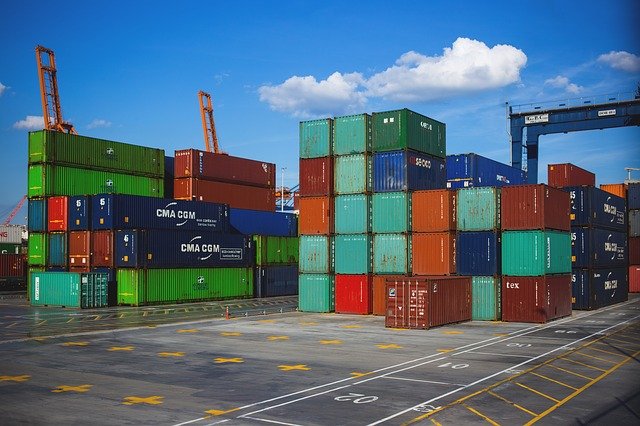A Comprehensive Guide On The Working Process Of Container Shipping In Canada
Canadian imports and exports are heavily reliant on container shipping. With this mechanism in place, individuals and businesses that are into eCommerce can move goods from Canada to other countries across the globe, and vice-versa. Venturing into this industry calls for interested shippers to understand customs clearance requirements, regulations, among others.
This guide discusses everything worth knowing about Canadian container shipping.
What is Container Shipping?
Container shipping has been a part of the world’s global trade system for several decades, but this business itself is complex. It is defined as a complex commercial industry with numerous functioning elements, ranging from importers and exporters to insurance companies and port authorities, and shipping companies and freight forwarders.
To grasp the scope of the sector, it’s necessary to define these terms and comprehend their significance in eCommerce. For example, an exporter shipping 3,000 Seagate hard disc drives from Singapore will require a freight forwarder to deliver the goods from the company to the warehouse where they will be stored.
The warehouse charterer then employs the services of a ship brokerage business to reserve a spot aboard a container ship bound for Canada. Once approved, the products (Seagate drives) are placed in a container and transported to the port by rail or road. At the port, the containers are loaded onto the ship. The delivery duration can range from 15 to 24 days, depending on the speed and shipping route.
The Value of Container Shipping in Canada
Canada is one of the world’s most active container shipping markets. The Canada Container Port Throughput statistics from December 2019 validate this assertion. Its value was recorded as 7,004,090.000 TEU, up from 6,770,381.000 TEU the previous year.
Additionally, some of the largest ports in the country — The Port of Montreal, a cruise and transshipment center in Montreal, Quebec, and the Port of Vancouver, North America’s fourth-largest port — are expanding rail and terminal capacity to improve the ocean freight industry.
The Port of Toronto is one of Canada’s busiest inland ports, serving a fourth of the country’s populace. This port provides importers with easy access to locations like Hamilton, Brampton, Mississauga, and Markham. With these expanding infrastructures in place, the shipping industry can cater to the growing demands of shippers, making container shipping more seamless and flexible.
Types of Shipping Container Capacities
Canadian shippers exporting items through container shipping have two options: Less than Container Load (LCL) and Full Container Load (FCL). The type of shipping option selected determines the shipping rate.
Less Than Container Load (LCL)
Under this category, shippers can book different spaces in a shipping container where they can load their goods. It implies that they are only financially responsible for their allotted spaces, not the entire container. As a result, LCL shipping is economical and ideal for shippers without bulky items. However, there is a drawback to this choice.
A shipper, let’s say Company A, would have to wait for other shippers, Companies B to H, to book their spaces and load the container with their cargo before commencing shipment. If there is a delay, this process may impede product delivery.
For this reason, LCL shipping takes longer than its counterpart. Individuals involved in product manufacture, distribution, or both must find a balance between cost-effectiveness and timely delivery — two essential factors in business processes.
Full Container Load (FCL)
FCL shipping entails renting the entire container for shipment. It is quicker but more expensive than its counterpart. Shippers can swiftly load the container without delays. They can also manage their freight business contracts personally and select the best shipping routes for their goods.
They would, however, bear the full rental cost of the entire container, even if they don’t fill it up with goods. This shipping option is excellent for importers who are more concerned about quick delivery.
Ideal Container Shipping Option
Shippers with large shipments — beyond 15 CBM — will require FCL shipping to ensure that their goods are delivered completely and on schedule. They don’t have to transport these items twice because the shipping container is large enough to accommodate them.
Importers have various volume options for their shipments, depending on how large they are. For example, they can use load their cargo into a 20ft dry shipping container or a 45ft high cube cargo worthy shipping container.
LCL shipping might be a better option if they have a smaller cargo and don’t need it delivered quickly. In contrast, Importers with perishable, fragile, or high-value goods should avoid this shipping option to prevent damage or waste.
How About Goods That Can’t Fit Into a 40ft Container?
Breakbulk shipping is required for cargo that is extremely voluminous or large to fit inside a conventional 40ft container. Such items are packaged and shipped individually.
Container Shipping Paperwork
Importers are to provide necessary documents for international container shipping to ensure trouble-free product delivery. A commercial invoice, a Bill of Lading, a Letter of Credit, a customs authorization, a Certificate of Origin, and a packing list are just a few examples.
Customs clearance is required for goods imported into Canada. Depending on the cargo type, additional papers such as licenses, permits, and certifications may be requested. Once the importer’s paperwork meets the Canadian customs’ requirements, the products will be cleared from the port.
Keep in mind that if the cargo is transported through LCL, it will be consolidated before the importer picks it up at the cargo port or wait for it to arrive at a designated pick-up location.
List of Cargo for Container Shipping
Ocean freight shipping provides a platform for importers to move different types of cargo into Canada. It is not as stringent as air freight. Shippers can import items, like:
- Dry bulk cargo
- Dried food
- Motor and non-motor vehicles
- Equipment, machinery, and machinery components
- Gas-based fuels, including petroleum, crude oil, CNG, LNG, and volatile fuels
Importers can ship these products in large quantities using FCL shipping.
Final Thoughts
The container shipping industry is not only about moving goods but fulfilling the expectations of importers and exporters. This means that these shippers must work seamlessly with freight forwarders and other entities to ease the product shipment processes, including the Canada Border Services Agency (CBSA)
Shippers must also consider several factors when organizing a shipment. These include the chosen port location, the cargo type, whether the shipment is LCL or FCL, and the choice of the shipping carrier. By doing so, they can ensure seamless product delivery.







Recent Comments